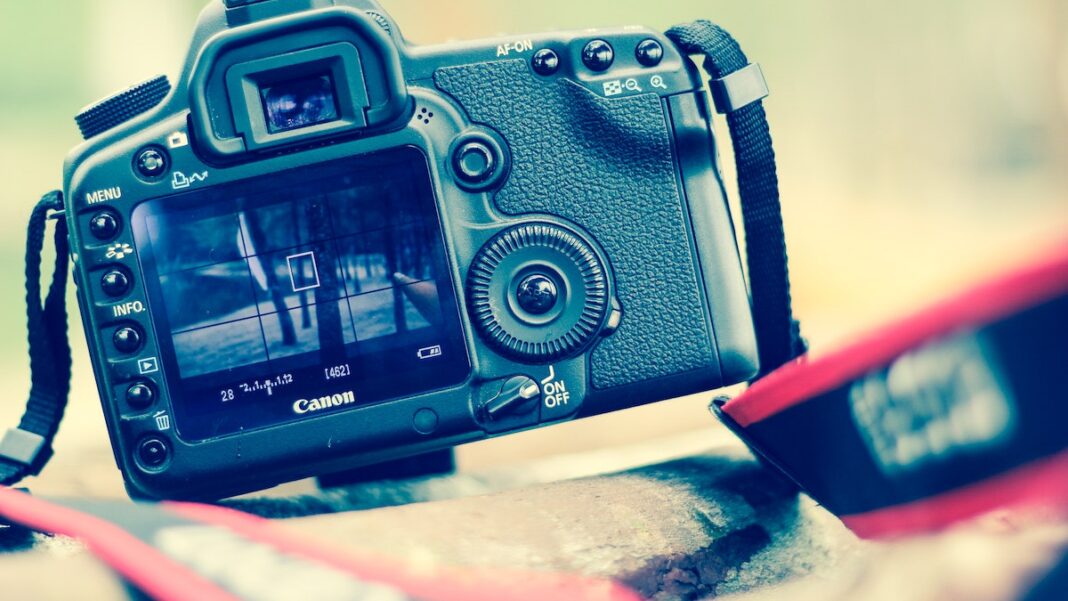Whether you make a living selling photos or photography is your passion, every photographer wants their photos to be seen by as many people as possible.
A photography website is without a doubt the best tool that’ll enable you to expose your photos to a wider audience.
Today there exist a good number of ways to design an online professional photography site without having a thorough knowledge of Web design.
In this quick guide, I’ll show you how to create a photography website for both professional and amateur photographers.
What are the benefits of a photographer’s website?
As a photographer, it is important to be as close as possible to your audience. In this context, your photography website should serve as a brochure for your business and as a sales platform.
A photography site offers the following advantages:
- With a personal website, you have the ability to showcase your photos to the world. Potential customers will thus be able to get an exact idea of your services and your offers.
- Thanks to your online presence, you will gain visibility. These days, websites are a central point of contact for receiving customer inquiries.
- In essence, a photographer’s website is also a potential sales platform where customers can buy the photos you have taken without having to pay a commission to a commercial photo platform.
- Unlike social media and general photo platforms, you are in sole control of the content on your photographer’s website. It will thus serve as an independent base and hub for all your online and social media activities.
Whether you are an amateur photographer or a professional, the same rules apply if you want to make money from your photos.
The fact is that the Internet is today the main source of information for people looking for products or services. So, having a personal website is a good way of generating some commissions.
Photography and Coronavirus: Time to Experiment on the Web
The coronavirus crisis has had a profound impact on the photography sector. This difficult period is proving to be a colossal and often vital challenge for the self-employed in particular.
Presumed or usually fixed orders are being canceled one after the other, as many fairs, events, and family celebrations, such as weddings and birthdays, are canceled entirely or take place in a significantly more intimate setting.
In any case, Financial losses can only be absorbed by the self-employed with considerable reserves or those having another source of income. For others, the health crisis turned into an existential crisis.
A photographer’s website is not a silver bullet to the problems posed by canceled and pending orders amid this crisis.
However, a personal website can serve as a platform for you to offer new approaches that are very popular today: for example, you can start a blog and integrate it into your business.
In this blog, you will be able to regularly publish photos or transmit your know-how as a photographer.
In the same light, you may create a YouTube channel with tutorials that you can promote on your photography website by embedding the videos from your channel.
It is also possible to offer online seminars as an alternative to your other activities, in which case a website will be the perfect place to manage all the formalities.
How to create a photography website
If you have decided to create a photographer’s website, now is the time to choose the system that will be right for you.
In principle, several ways of creating a website are available to you, each with its advantages and disadvantages:
- personally program and design your photographer website,
- mandate a professional Webdesign agency to design your photography website,
- use the Webdesign services of a trusted access provider,
- build your photography website using a content management system (CMS) like WordPress
- create your photography website using a modular creation system (such systems are partly made available free of charge by the right providers).
| Personal Programming | Modular site creation | CMS | Web design agency/service | |
|---|---|---|---|---|
| Advantage | extreme design freedom | ready-to-use templates; technical bases included | strict separation between design and content; highly stretchable | professionals provide you with an all-inclusive package for your website |
| Inconvenience | needs a lot of effort | limited possibilities; dependence on the provider | need for regular updates; project security requires skills | very strong dependence on the chosen service provider |
| Price range | cheap | average | low/medium | high |
| Degree of difficulty | very difficult | easy | AVERAGE | very easy |
Personally programming your photography website
The advantage of this solution is that you will be able to obtain a personal website that fully meets your desires, and this is at a very advantageous price.
The main disadvantage is that not everyone has the necessary programming and web design knowledge. If you are starting from scratch, acquiring them will usually take you a considerable amount of time. Moreover, if this is your case, your first attempts will not have the appearance of a professional site.
Using a web design agency
Commissioning a design agency to program and design your site is a relatively safe solution to obtaining an aesthetic photography site, but it is often the most expensive solution.
If you hire an agency, don’t make the mistake of thinking that you won’t have to take care of the design of your website. Ideally, you should come up with as accurate a representation as possible of the content and structure you want for your website.
The specifications of the site and its content must come from you, the agency’s role is to bring them to life.
Very often, the client and the agency work together on a concept for the website before starting the actual work. The more this concept will be detailed and the less you have a concrete idea of what you want, the more time it will take to realize this concept and therefore the higher the costs will be.
Web design service from an access provider
Using the web design services of a trusted access provider can be a more advantageous alternative than a web design agency.
Most often, the photographer’s website will be designed based on existing templates. You then determine from the outset the appearance of your website and the elements it should contain.
Aside from a professional design and a corresponding design of the texts, a good web design service also comes with a very wide range of attractive templates as well as personal advice, especially with regard to maintenance and future improvements to be made to the website.
Moreover, such a service also has a transparent pricing structure that precisely defines which specific services are included in the different packages.
Build your website in minutes
Design a photography website with WordPress
Content management systems like WordPress are a popular way to design and publish great-looking sites at a great price.
In principle, no programming knowledge is required, though in most ambitious projects, having some basics in HTML or CSS can’t hurt.
WordPress, for example, offers countless different templates (“themes”) from which it is possible to design very different websites. Among these “themes”, a large number are available for free, at least in their basic version, and most of the commercial “themes” cost considerably less than $100.
For a professional site with your own domain name, you will need to install the content management system of your choice and, if necessary, host it personally, which can be complex for beginners.
Create a photography website with a modular creation system
Modular website building systems are today the easiest and most convenient way to design and launch a professional and beautiful photography website at a great price.
The main advantage for beginners is that the Internet address, the disk space required for the website, and the modular system usually come from the same supplier.
In these systems, you generally choose a suitable template which you then tweak to meet your needs and which you supplement with your content. Good modular creation systems mainly stand out for the following characteristics:
- a wide selection of different templates, sometimes tailor-made for specific sectors or to meet particular requirements,
- a high degree of template customization,
- a wide range of different functionalities, ranging from links to social networks to complete ordering and shop systems and contact forms,
- simple and intuitive
- SEO support, e.g. in the form of specialized tools,
- full personalized assistance.
There are a whole series of very good modular building systems, which are also used today by medium-sized companies due to their wide range of functionalities.
For photographers in particular, modular authoring systems are an efficient and cost-effective solution for designing and publishing a personal website quickly and simply.
What are the essential elements of a photography website?
In principle, photography websites can be structured like most other small business websites, except for the fact that the photos you intend to display will be central. Furthermore, visitors to photography websites attach more importance to an attractive design than visitors to a tax consultant’s website, for example.
A simple photography site should include the following elements, which you can of course extend according to your needs:
- Home page
- Services and offers
- References and projects
- “About” page
- Contact page
- Legal Notice and Privacy Policy
Home page
The Homepage is the main page of every website and will generally determine the first impression of your visitors. A good landing page should group your website’s content in a user-friendly way and allow your visitors to identify your website’s purpose at a glance.
From the home page, visitors should be able to access all the content they are looking for.
In general, it’s better to have a simple and clear home page with a few handpicked photos than to overload the homepage, thus drowning the visitor with information as soon as they arrive.
Services and offers
In the section, the photographer gives an overview of the services he offers (eg travel, wedding, or architectural photos).
Potential clients should be able to identify the services provided by the photographer at a glance.
References and projects
References are also essential on a photographer’s website, as potential clients come to the site to get a first impression of the photographer’s style and skills.
On a photography website, photos are often presented in image galleries.
In order to publish photos of people on a website, you must first obtain the agreement of these people. This rule applies to both professional and amateur photographers.
“About” page
section The “About” provides information about your (personal) background as a photographer. Many clients are interested in the quality of the photos, but also want to know who they are dealing with, especially if they are planning to hire a photographer for their wedding.
Many photographers often mention their training, their “philosophy” or their personal conception of photography.
Contact page
The Contact page is the decisive section of a photography website when it comes to receiving orders. You need to make it as easy as possible for your potential customers to contact you.
Especially on a local level, it is recommended to always place a prominent telephone number on the homepage. The more people use your website contact information to contact you, the more orders you will have.
Legal Notice and Privacy Policy
In the Legal Notice and Privacy Policy pages, you must provide a couple of informations required by law. Site administrators often help their clients by providing advice on writing legally sound disclaimers and a privacy policy.
At the beginning, an attractive homepage and a few subpages with photos will be sufficient. However, in order to be legally safe, amateur photographers will also need to write a legal disclaimer and a privacy policy, especially if the website ends up being used for commercial activities.
How to Create a Photography Website: Step-by-Step Guide
A photography website will determine your success in this highly competitive industry.
After having presented in the previous sections the main elements of a photographer’s website and the possible solutions for creating your own website, the step-by-step guide below summarizes the exact steps to you’ll need to follow.
Step 1: Choose the domain for your photographer site
Every website needs a web address (domain) in order to be accessed on the Internet. This choice must be carefully considered, because a well-chosen domain name helps your website to be consulted by more visitors partly because a website with a good domain name can easily found by search engines.
You should observe the following points while choosing the web address of your photographer website:
- Like a good brand name, a good domain name should be remembered. Therefore, your web address should be easy to remember . Generally, the shorter the better.
- Choose a domain name that refers to the content of your website.
- Short addresses have the advantage of being easier for users to type into their address bar. For the same reason, it is better to use common words. (Abbreviations or incomprehensible letter combinations should be avoided).
- Whenever possible, avoid using accents that may cause confusion. Addresses with special characters such as “Ø” cannot be registered.
- Think about the keywords that potential customers will type online to search for a photographer. For example, if your offers are aimed at the inhabitants of a city, a domain name such as ny-photography.com could be relevant.
Step 2: find the right design
Whatever solution you choose to create your website, finding a design that works and that will attract interested people to your photography site is often not an easy task. In particular, the user-friendliness of your site is a point that should guide you during the visual design and optimization of your site.
Concepts like user-centered design, which puts the visitor experience first, have proven to be the right choice these past few years.
Even though design agencies and services have comprehensive web design know-how, you still need to keep close contact with these external partners during the planning phase in order to ensure that the final product does not differ too much from what you had in mind.
If you opt for a modular creation solution or a CMS, you do not have to start from scratch when designing since many ready-to-use templates and themes are available. Simply search for the right template to use as the basic structure for your photographer website and then customize it with your content.
Step 3: Bring your site to life with content
Programming and design are essential elements to the success of your photography website.
The heart of a photographer’s site is of course the content presented to its visitors.
Unlike websites in other sectors, you have the advantage of already having professional photographs. However, remember that this is also the case with your competitors! Therefore, carefully select the photos you will post as reference photos and also bring out your artistic touch in an interesting and captivating texts .
Step 4: Publish your photography site and optimize it for search engines
Once your web project is online, search engines such as Google will certainly be one of the main sources of visits to your photography website outside of social networks like Facebook or Instagram. Therefore, it is important to design your website with search engines in mind from the outset.
The fundamental objective of a search engine is to bring the best possible result to search queries (ie to specific keywords). By designing your photography website in a way that search engines can easily find and rank it, you increase your visibility.
To do this, you must observe the following principles:
- Make sure your site runs technically flawlessly. Websites with excessively long loading times are less user-friendly and are rated lower by Google than functional websites.
- Your photography site should work the same regardless of the device (whether it’s a smartphone, PC, or TV screen).
- Search engine bots fail to read photos properly. Therefore, it is extremely important to write explicit captions and alt text explaining the content of images to search engines.
- Give your website a clear structure, especially in the form of a logically structured navigation menu. Avoid nesting.
- Your photography website should have unique content. You must absolutely avoid copying texts or paragraphs from the Net (unless they are quotes or legal texts). Websites with copied texts are usually downgraded.
- Think about the keywords that your potential customers will use in their searches on the web and integrate these terms into your texts, and ideally your titles, in a natural way, i.e. so that the reading is fluid and logical. Your texts should always be easy to read for your visitors.
- Link your website to other trusted sites, e.g. to reputable media outlets you’ve worked for as a photographer, and let those sites link to your website. Links from well-reviewed websites (called “backlinks”) act as recommendations and improve your status with search engines. The editorial content of your site is the most suitable here, but the profile links to your home page can also help.
- Carry out all your SEO measures with determination and circumspection and do not try to outsmart the search engines with tricks, especially if you are new to this field. In the long run, the best SEO strategy is to simply have a user-friendly website.
Search engine optimization is today a highly professionalized field of activity. The tips above are just some of the key points you should observe when designing your photography website.
If you create your website with WordPress, several plugins support you in optimizing for search engines. It’s even easier with a good modular authoring system: they are designed from the outset to be as technically search engine friendly as possible. In addition, many good service providers offer comprehensive tools for analyzing the search engine optimization of websites and improving them accordingly.






